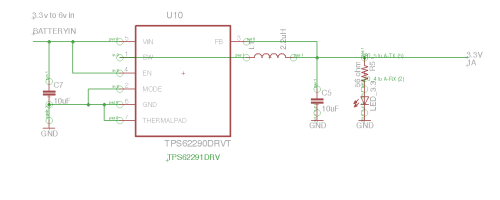cjdelphi:
The inductor then cleans the signal as i originally stated then, as the energy is built up in the inductor when the ic switches off the inductor lets it magnetic field release...
No, you are close, but still missing the point. The inductor's purpose is not there to "clean up" the signal. In fact, the inductor creates quite a bit of voltage ripple in the circuit, which is why there is a capacitor in the circuit.
The inductor is the primary energy storage device of the circuit. When the transistor turns on, it charges up the inductor's magnetic field so that it can provide the current when the transistor is off. That isn't "filtering". That's energy storage. The entire purpose of the circuit is to minimize the losses of the transistor. So if there isn't an inductor there, the switching regulator won't function.
After the switching circuit you may see a filter composed of an inductor and capacitor. In which case THAT inductor's purpose is to filter, or as you say, "clean up", the signal.
cjdelphi:
it should output a voltage (how else does the inductor produce / collapse the magnetic field to begin with?!)
The IC outputs a pulse-width modulated signal. That's the whole point. Unlike a linear regulator where current is constantly flowing through the transistors, a switching regulator switches. When the switch is off, ideally no current flows so no losses. When the switch is on, ideally it is a short so no losses. A boost configuration allows for a higher output voltage while a buck configuration allows for a lower output voltage, relative to the input.
1ChicagoDave:
Wow, you should really let Texas Instruments know about this so they can correct the datasheet!
Yes, I'm being pedantic around the use of the word "filter." One of the functions of the inductor is to form a filter. However, the primary purpose is not to act as a filter as cjdelphi describes. It's a fine line, but I'm trying to stress how the parts are actually working, and not focused on what people call them.
